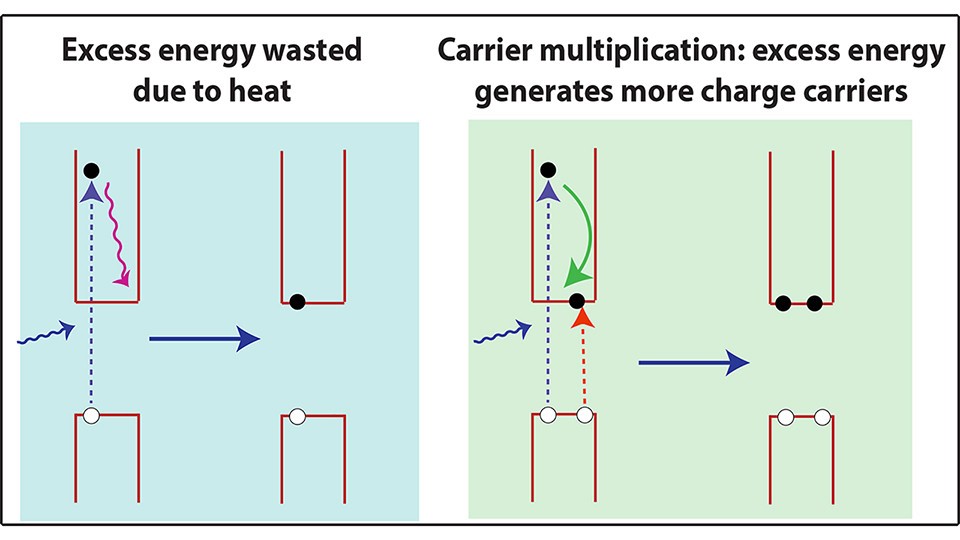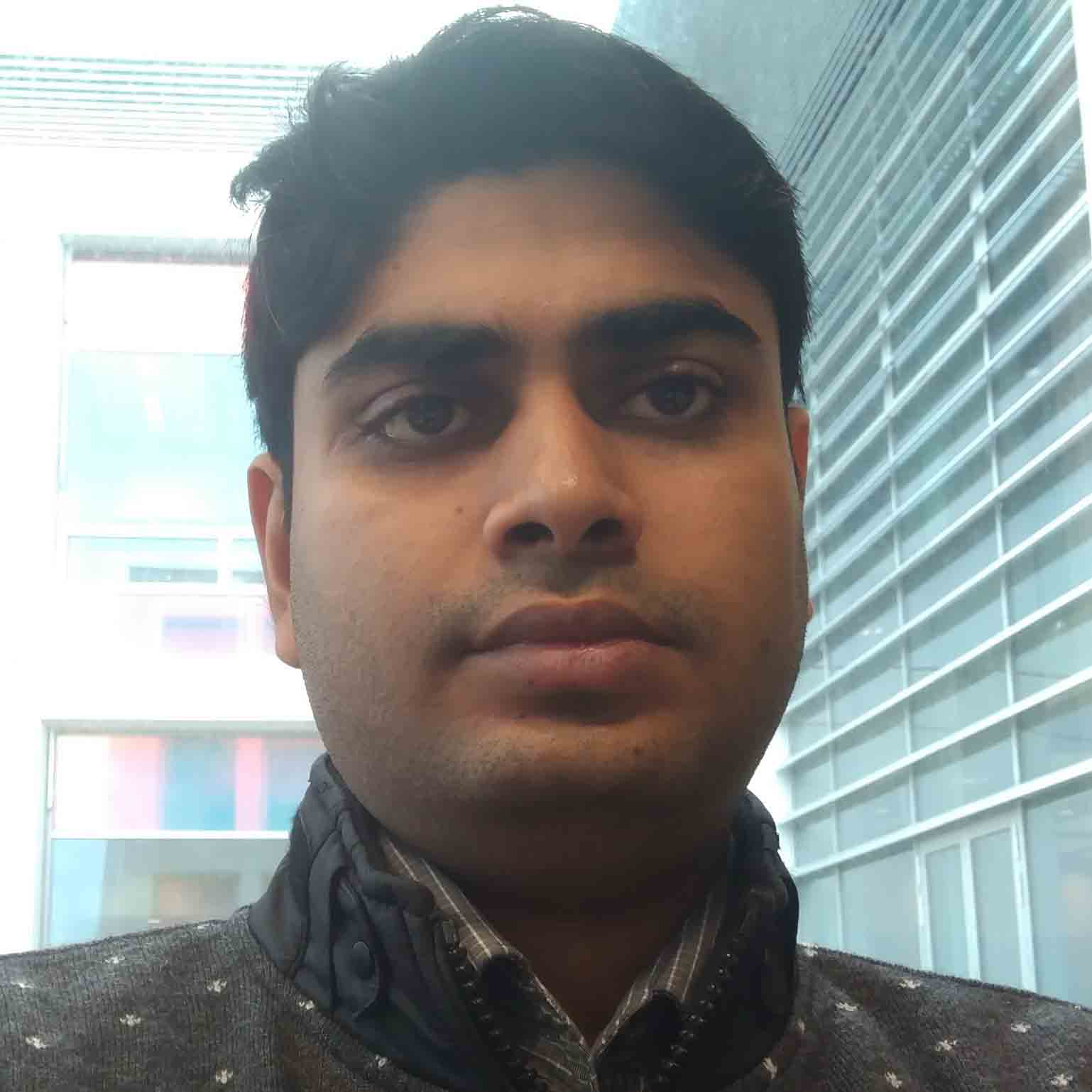Carrier multiplication for more efficient solar energy conversion
Renewable energy sources such as solar energy offer solutions to the adverse effects of fossil fuel burning. However, conventional solar cells such as silicon have a limitation in terms of efficiency. The current solar cells can not convert the full solar spectrum to electrical energy due to two reasons (i) photons above the band gap create hot carriers whose energy is lost through thermalization or heat and (ii) photons below the band gap are not absorbed. Therefore, single-junction silicon solar cells can have a maximum of ~33% efficiency known as the Shockley-Queisser limit. How to overcome this efficiency barrier is, therefore, an important research question that is addressed by postdoc Sourav Maiti from the Optoelectronic Materials Section.
Instead of thermalization, the high energy photons (point i) could lead to carrier multiplication where the excess energy is utilized to create additional charge carriers. Thus one single absorbed photon can generate two (or multiple) electron-hole pairs leading to increased photocurrent in solar cells. Apart from efficient carrier multiplication, the charge carriers in the light-absorbing material should also have a long lifetime and high mobility to realize efficient charge transport and extraction from a solar cell. Recently, we have utilized pump-probe transient absorption spectroscopy to show efficient carrier multiplication in a bulk Sn/Pb halide perovskite material that largely satisfies all of the required properties.1 Apart from the Sn/Pb halide perovskite, several other materials have shown to be promising to efficiently exploit carrier multiplication in solar cells. We have summarized recent experimental and theoretical progress in this area in terms of suitable materials, current limitations, and future prospects.2
References:
- S. Maiti, S. Ferro, D. Poonia, B. Ehrler, S. Kinge, and L. D. A. Siebbeles, J. Phys. Chem. Lett. 11, 6146 (2020).
- S. Maiti, M. van der Laan, D. Poonia, P. Schall, S. Kinge, and L. D. A. Siebbeles, Chemical Physics Reviews, 011302 (2020).

